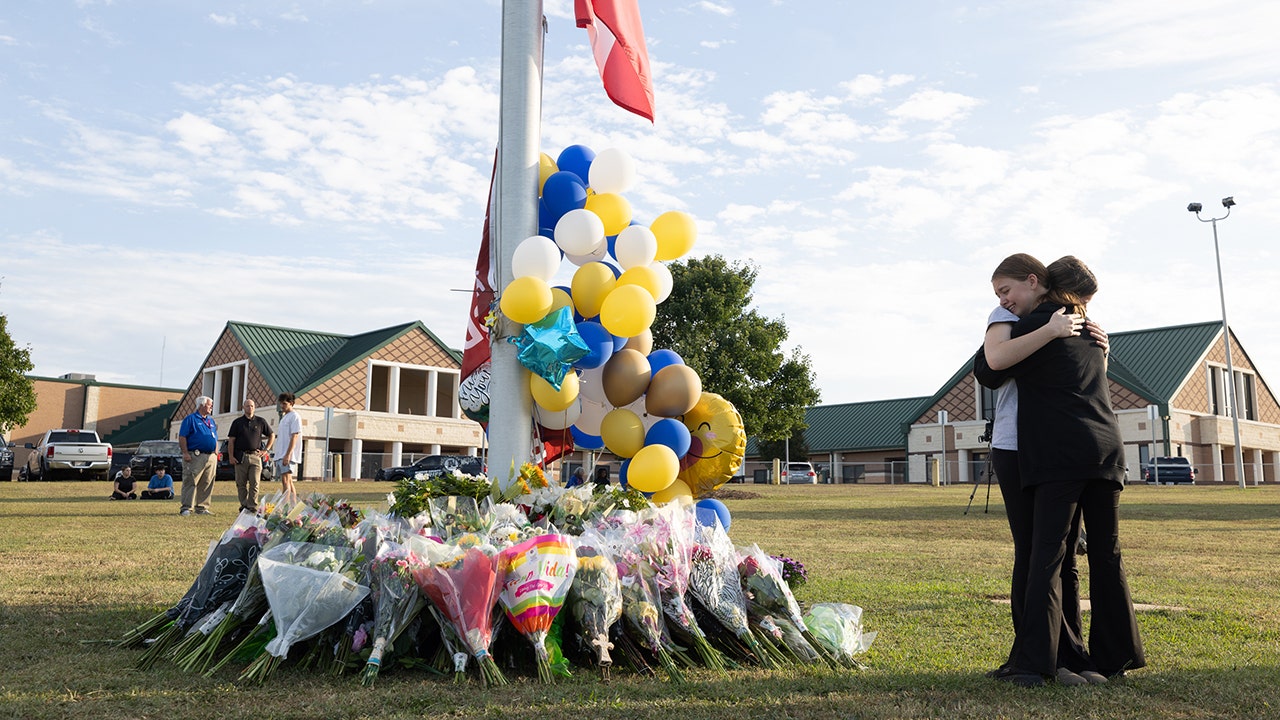Our homes are reflections of ourselves, right? So it makes sense that James Goldstein’s house, hovering over a canyon atop Beverly Hills, Calif., is one of the most strange, fascinating and perplexing architectural projects in the world.
Goldstein, 84, a controversial figure who made his fortune investing in mobile-home parks in California, may be familiar to you. He’s that leathery-skinned, frizzy-haired guy always sitting courtside at N.B.A. games — he attends more than 100 a year. He’s that guy who shows up at all the fashion shows in Paris and Milan, with a couture-meets-cowboy look, often punctuated with snakeskin hats, colorful leather jackets and a woman more than half a century younger than he is. And he’s that guy who owns the Sheats-Goldstein house — a stunning landmark by the architect John Lautner, fusing prehistory and futurism, solidity and weightlessness, inside and outside, that has been a set piece for films (“The Big Lebowski,” “Charlie’s Angels: Full Throttle”); for the real estate reality show “Selling Sunset”; for countless music videos; and for parties thrown by the likes of Rihanna and the Kardashians.
“The word subtle doesn’t exist for me,” Goldstein said, dressed in all-black tennis gear and a palm tree-emblazoned black jacket. He’s sitting on the sprawling lower terrace of his home’s recently-completed (for now), three-level addition, which is a separate compound overlooking the towers of Century City and, beyond that, the glinting bend of the Pacific Coast.
He calls this undertaking the Goldstein Entertainment Complex, and it also includes Goldstein’s office and a nightclub (yes, you read that right) called Club James, with an infinity-edged tennis court as the roof, made of post-tensioned concrete. Goldstein and his team of architects, builders, engineers and landscape designers have been working on the Lautner house addition since 2003, and that’s just the tip of the iceberg when it comes to Goldstein’s property, which he has been tinkering with for more than 50 years.
Goldstein bought the Sheats-Goldstein house (built in 1963 for Helen and Paul Sheats, an artist and a doctor, and their children) for $182,000 in 1972. Aghast at its cramped feel and banal plaster, stucco and Formica surfaces, he enlisted Lautner himself to help make improvements. Over about 20 years, they removed cluttered divisions and installed frameless glass windows, concrete and wood ceilings, built-in leather-covered furniture and automated skylights.
“The purpose of all of this was to make the inside feel like it was outside,” said Goldstein, who describes a very collaborative working relationship with Lautner until the architect’s death, at 83, in 1994. Goldstein would come up with crazy ideas, and Lautner would come up with beautiful, brave ways to pull them off. Why not build a clear glass sink for the master bathroom or a dry-cleaner-style conveyor belt for the closet? Why not install moving glass walls and make the pool deck feel like the edge of the world?
“What we had in common, besides our love of architecture, was our rebellious nature,” said Goldstein, who moved to Los Angeles in 1958 to attend graduate school in business and has embraced the city’s rebel vibe ever since. “Both of us had a problem with rules, with conforming. I think like that all the time. I’m not gonna do that if I think it doesn’t make sense.”
After visits to places like Hawaii and Thailand, Goldstein installed, with the help Eric Nagelmann, a landscape architect, tropical foliage, enveloping the site in thick palms, bamboo, winding paths and blade-like stairs. “It’s a wild, mad, tropical jungle,” said Nagelmann, 67. Goldstein didn’t break step after Lautner’s death, creating, with a team led by Lautner’s associate Duncan Nicholson, a mesmerizing James Turrell Skyspace just down the hill in 2004.
“As the project progressed I realized I loved the process,” Goldstein said. “I could already see the impact of what was happening, and before it was even finished, I started thinking about other things to do.”
A Grand Vision, Just Beginning
These images of the Sheats-Goldstein house were shot by the photographer Julius Shulman in 1980, just eight years after James Goldstein bought the John Lautner-designed residence. Few of Goldstein’s and Lautner’s major changes had been realized at this point, but there are some signs of an evolution.
His entertainment complex, like much of the work here, morphed from what he first envisioned. It started in the early ’90s when Goldstein bought Lautner’s 1960 Concannon House, just west of the Sheats-Goldstein house, with plans to build a tennis court and guesthouse on its lot. He paid $800,000 — and proceeded to demolish it.
Years of challenging design, iteration, permits and construction later, Goldstein and Nicholson realized that under the court there would be space for more — hence the office and club, completed in 2016 (clubbing is another passion of Goldstein’s, even now). While walking on the steep, brush-filled slope below the construction site, Goldstein decided he needed more: “I just sat on the hillside and looked up and said, ‘This could be a great terrace.’” That area now includes a 90-foot infinity pool, spa, firepit, barbecue, kitchen, bar, lounge and formal dining area. The final pieces of the puzzle will be the guesthouse and a theater that cascades down the hillside.
It’s a pharaonic effort, and Goldstein’s vision and attention to detail are unwavering. He pushes for things nobody in his right mind would, and has the patience, and money, to carry them through. “I would buy whatever I wanted, and he would never ask for a receipt,” Nagelmann said. “No obstacle will stop him. It’s all about passion.”
Goldstein has, by most accounts, solid design instincts, honed in part by an early love of Frank Lloyd Wright’s architecture in his hometown, Milwaukee. His father’s company was based in Racine, Wis., not far from Wright’s famed Johnson Wax Headquarters. Goldstein credits exposure to his family’s clothing business, Zahn’s Department Store, for his sense of style.
He has stuck almost exclusively with the team that created the original house, or with those who trained under them, remaining intimately involved with every aspect. Nagelmann and the home’s builder, Harry Ernst, have been working with Goldstein for more than 30 years.
And while the new complex is flashier and slightly less artful than the original masterpiece, Lautner’s soaring design spirit — his sharp angles, textured concrete, meticulous detailing and intimate connection to the lush outdoors — has carried over.
“It’s about freedom,” said the architect Kristopher Conner. He and his partner James Perry have been leading the design of the entertainment complex since Nicholson suddenly died of cancer in 2015 (Conner and Perry had both been associates in Nicholson’s firm). Goldstein, Conner said, “is not afraid at all.”
That fearlessness is evident in the tennis court jutting off the side of a cliff, in the cantilevered balconies, eaves and furniture — and in the huge, angled frameless glass windows that seem to pull you into the Los Angeles basin below. Glass balconies tilt away at angles that dare you to lean over them. The final step of the floating staircase that ascends to the club has an extra-large gap at its apex, making it feel thrillingly dangerous.
“There’s this amazing juxtaposition of complexity and minimalism, sharp edges and fluidity,” Delaram Pourabdi, the creative director for the concert promotion company Goldenvoice, told me during a throbbing Grammy party that Snoop Dogg’s Death Row Records recently threw at the complex. “It creates an unbelievable energy, like you’re on the edge.”
Perhaps more than an obsession, Goldstein’s ever-evolving home is his legacy. In 2016 he agreed to bequeath it to the Los Angeles County Museum of Art after his death, along with a sizable fund for maintenance, hoping to inspire a future generation of architects.
“I want it to be open to the public as much as possible so they can learn,” Goldstein said. “Whether it’s architectural students or people who know nothing about architecture.” He opens the home for tours and events regularly, a stark contrast to the proprietors of many of the city’s finest residences.
“We’re still curious to see how the transition will be implemented, but knowing it will be protected and knowing there is an endowment for its upkeep, those are critical questions for any historic residence,” said Adrian Scott Fine, the president and chief executive of the Los Angeles Conservancy, a nonprofit dedicated to preserving the city’s architectural and cultural resources.
But, as with every aspect of Goldstein, it’s complicated. For every remarkable trait, it seems, there is a remarkably challenging one. He has no dimmer switch.
He can be impulsive and harsh, according to some who have worked for him.
“Jim has not been an easy client,” Conner admitted. He admires Goldstein’s vision, but chafes when he sometimes takes credit for what Conner says are his firm’s designs — or when he changes course deep into projects.
For example, after Conner and Perry had finalized their construction documents for the floating staircase, Goldstein noticed it would block his view to the city. He ordered the architects to trash their plans and start over. “I know what I want, but I don’t think I’m over demanding,” Goldstein said.
Nagelmann noted that the same fearlessness that served Goldstein in some of his daring projects cut the other way. “He was a dream client, really other than the fact that he’s not a nice person.” He added, “He doesn’t care. He does what he wants to do.”
Nagelmann continued, referring to yelling matches he viewed while working on projects, “The poor architects and assistants.” The decades of construction, not to mention aggressive battles over views and noise — and the parties — have not made Goldstein popular with neighbors, he also noted.
Then there’s the way he’s paid for it all: Goldstein’s is a well-documented path of buying rent-controlled mobile (also known as manufactured) housing parks throughout Southern California. He then either tries to raise rents beyond proscribed amounts or tries to convert them to market-rate or other more profitable development models. Goldstein sues cities that have tried to stop him, said Sunny Soltani, a partner at the California law firm Aleshire & Wynder and the city attorney for the City of Carson. Soltani has battled Goldstein in court for more than a decade, both in Carson and in Palm Springs and Palm Desert.
“Once he files a lawsuit, he makes it so expensive that local agencies just settle with him,” Soltani said.
Lula Davis-Holmes, the mayor of Carson, called Goldstein “a terrorizer of a landlord,” referring to legal disputes with him over Goldstein’s Colony Cove Mobile Estates and Carson Harbor Village.
“I own luxurious properties that are under the constraint of rent control, with rents going at probably 50 percent of rent levels,” Goldstein countered, “and I have many residents who can afford to pay market level that are riding the crest of rent control.”
Soltani said most residents in these developments were fixed-income older adults or low- to- middle-income families. “To say that these people are too well-off to qualify for rent control is such garbage,” she added. “This is closing down one of the last resources of affordable housing in California.”
Tom King, the chair of the South Bay Mobilehome Resident’s Alliance, acknowledges that Goldstein takes good care of his properties, but stresses that rent control ordinances in these cities are not based on tenants’ incomes.
Goldstein is aware of his detractors. But he’s much more concerned with building his house, and with his mystique.
He said he has spent tens of millions of dollars on his compound during 50 years of continual construction, and claimed that real estate experts have told him it would be worth more than $100 million. (Brian Linder, a real estate broker at Compass, estimated the value of the complex at around $30 million, while James A. Ebert, of Ebert Appraisal Services, said it could be worth “in the 40s.”)
Goldstein’s business card sums up what he considers his legacy: “Fashion. Architecture. Basketball.”
The site of sultry model shoots and regular pool parties, the house has become a sort of concrete wingman, with Goldstein in a Speedo. “I like tall, slender girls who typically are models or look like models and are much younger than me,” said Goldstein, who has never been married. “I’m different from what they usually encounter. I think that they sense a sort of aura that I give off as being in control and having some power.”
Goldstein said he did hear comments reproaching his partying, particularly on Instagram, where he likes to show off with young women. David Spencer, a local sports and entertainment marketer and longtime friend of Goldstein’s, said, “He is like that bachelor that people move to L.A. to become.” But he added: “He certainly marches to his own beat. In this day when there are so many conformists, the real influencer is the one who is going out and creating culture.”
While Goldstein is still in relatively good shape, playing tennis almost daily and driving his 1961 Rolls-Royce convertible to every home game, his resonant, radio announcer voice has become a bit shaky with age.
Which leads back to the question of legacy. Poster-sized, framed pictures of Goldstein adorn many of his home’s rooms, along with smaller images of him with the N.B.A. stars Dennis Rodman and Paul George, celebrities like Leonardo DiCaprio, Jay-Z and Mick Jagger, and the models Cindy Crawford and Pamela Anderson.
In his bedroom, hats, clothes and memories are laid out like artifacts in a museum. “Homes are inextricably linked to personalities,” said Fine of the Los Angeles Conservancy. “He is a larger-than-life individual, and his presence is very much felt when you experience the house.”
But what if preserving a house for posterity means glorifying a legacy that might be … complicated. Michael Govan, the director of LACMA, which will inherit the house, said he “didn’t know much about James’s business,” adding, “We’re all navigating history, of all kinds, including those of patrons.” But Goldstein, he said, has “done a great service to culture and history, not only by restoring the house but by taking Lautner where he wanted to go and pointing toward the future.”
Govan pointed out that Goldstein, looking ahead, didn’t want the house to be static. “In our agreement I’m supposed to keep having parties and fashion shoots,” to keep it alive for future generations. He wants tennis pros to be on the court.
“We always have to do this delicate dance,” Fine said. “We’re advocates for the built environment. You may not always like the people associated with it.”






